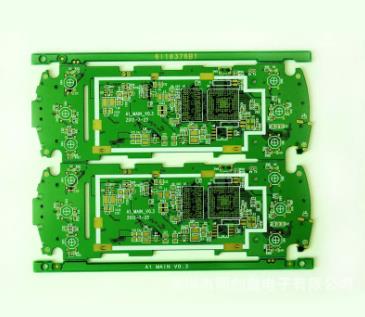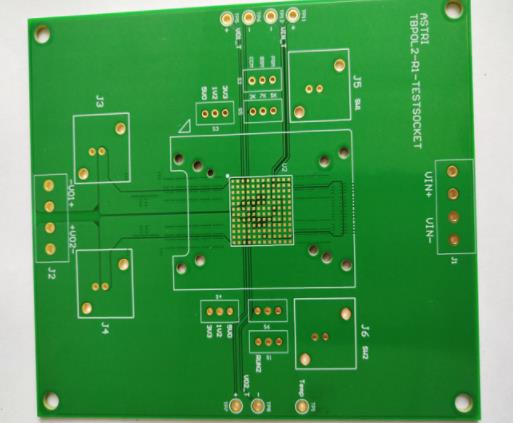

How to design high frequency pcb board of mICrowave circuit
PCB manufacturers, PCB designers and PCBA manufacturers explain how to design high-frequency PCB boards for microwave circuits
This paper focuses on the concept and planning principles of microwave grade high frequency circuit/microwave circuit and its high frequency PCB board, which is a frontier field of communication products. The reason why microwave grade high frequency circuit/high frequency PCB board planning principle of microwave circuit is selected is that this principle has extensive guiding significance and is a popular high-tech application technology at that time. The transition from microwave circuit high frequency pcb board planning concept to high-speed wireless network (including various access networks) project is also consistent, because they are based on the same fundamental principle - dual transmission line theory.
Experienced high-frequency microwave and RF engineers plan digital circuits or high-frequency PCB boards with relatively low frequency circuits. The one-time success rate is very high, because their planning concept is centered on "distributed" parameters, and the destructive effect of the concept of distributed parameters in lower frequency circuits (including digital circuits) is often ignored.

For a long time, the planning of electronic products (mainly for communication products) ended by many peers is often full of problems. On the one hand, of course, it is related to the lack of necessary links in electrical principle planning (including redundancy planning, reliability planning, etc.), but more importantly, it is because many such problems are thought to have taken into account various necessary links. In view of these problems, they often spend their energy on checking the program, electrical principle, parameter redundancy and other aspects, but rarely on reviewing the high-frequency PCB board planning. It is often because of the high-frequency pcb board planning defects that lead to a large number of product function problems.
High-frequency PCB board planning principles involve many aspects, including the basic principles, anti-interference, electromagnetic compatibility, security protection, and so on. With regard to these aspects, the lack of relevant concepts, especially in high-frequency circuits/microwave circuits (especially in microwave grade high-frequency circuits), often leads to the failure of the entire R&D project. Many people still stay on the basis of "connecting electrical principles with conductors to play a predetermined role", and even think that "the planning of high-frequency pcb boards belongs to the consideration field of structure, process and improving production power". Many professional high-frequency microwave and RF engineers have not fully realized that this link should be the key to the entire high-frequency pcb board planning in RF planning, and they mistakenly spent their energy on selecting high function components, resulting in a substantial increase in cost, but little progress in function.
In particular, it should be pointed out that digital circuits rely on their strong anti-interference, error detection and correction, and arbitrary structure of each intelligent link to ensure the normal function of the circuit. A general figure uses circuits to configure various "ensure normal" links with high addition, which obviously belongs to the action without product concept. However, the link that is often considered "unworthy" leads to a series of product problems. The reason is that such functional links, which are not worth ensuring structural reliability from the perspective of product engineering, should be based on the operation mechanism of the digital circuit itself, but only on the error structure in circuit planning (including high-frequency pcb board planning), resulting in an unstable circuit. As a result of this instability, SIMilar problems with high-frequency circuits/microwave circuits belong to the fundamental application of the same concept.
In digital circuits, there are three aspects that deserve serious attention:
All kinds of reliability planning in the application of digital circuits are related to the reliability requirements of circuits in practical application and product engineering requirements. It is not allowed to add various high cost "guarantee" parts to circuits that can fully meet the requirements with conventional planning.
2. The operation rate of digital circuits is moving towards high frequency with unprecedented development (for example, the main frequency of current CPUs has reached 1.7GHz, far exceeding the lower limit of microwave frequency band). Although the reliability assurance functions of related devices are also synchronized, they are based on the internal and typical external signal characteristics of devices.
3. Digital signals themselves belong to broad-spectrum signals. According to the results of Fourier function, it contains rich high-frequency components, so the high-frequency weight of digital signals is fully considered in the planning of digital ICs. However, in addition to digital ICs, signal transition areas within and between functional links will lead to a series of problems if they are carried out arbitrarily. Especially in the digital and analog and high-frequency circuit (high-frequency pcb board) mixed use of the circuit occasions. PCB manufacturers, PCB designers and PCBA manufacturers will explain how to design high-frequency pcb boards for microwave circuits.
然后
聯(lián)系
電話熱線
13410863085Q Q

微信

- 郵箱










